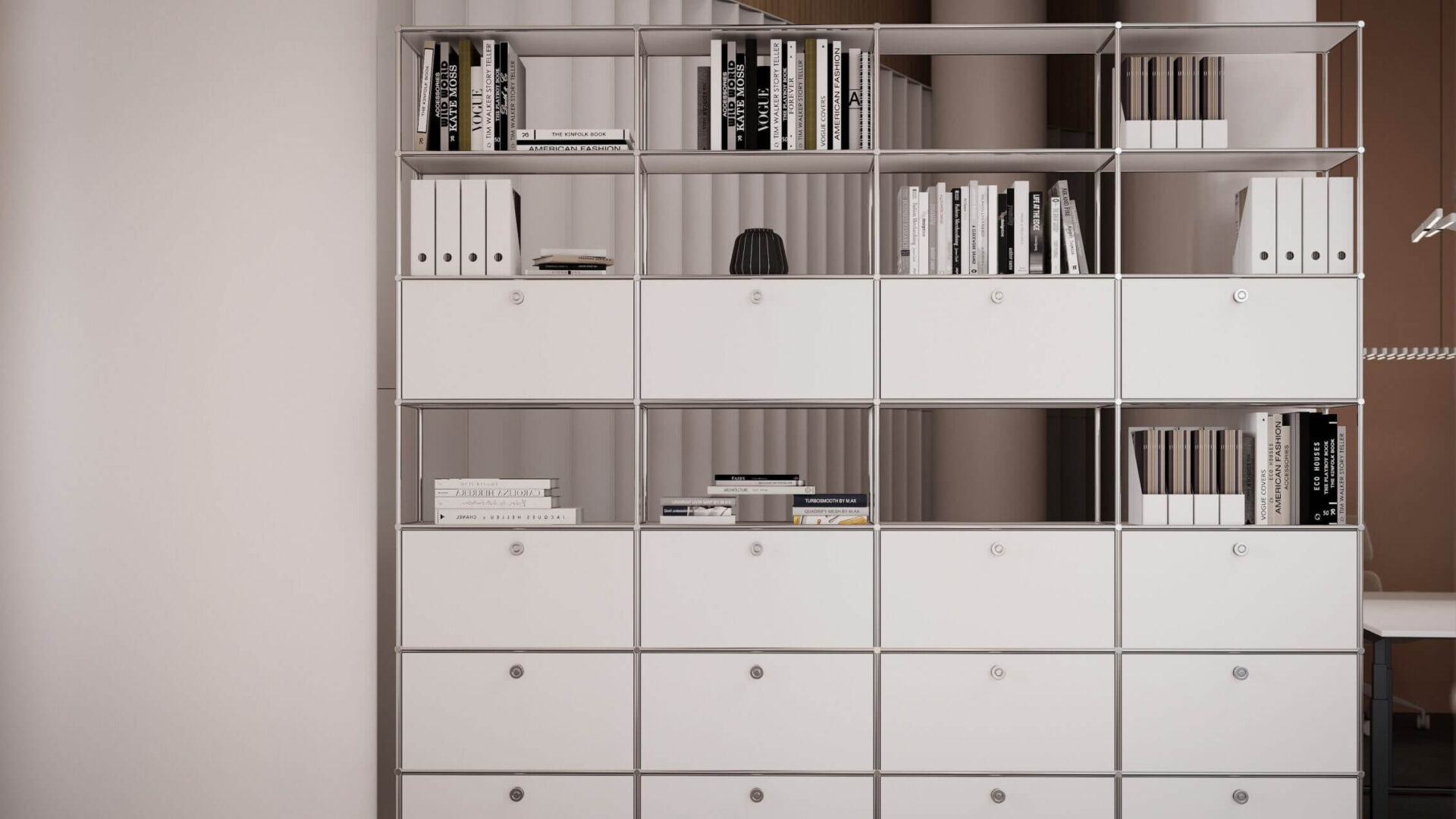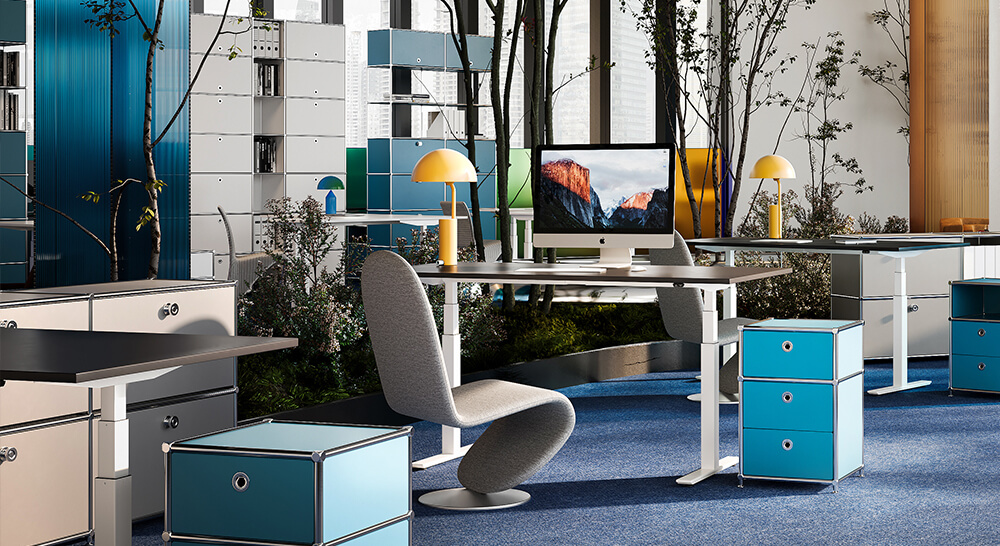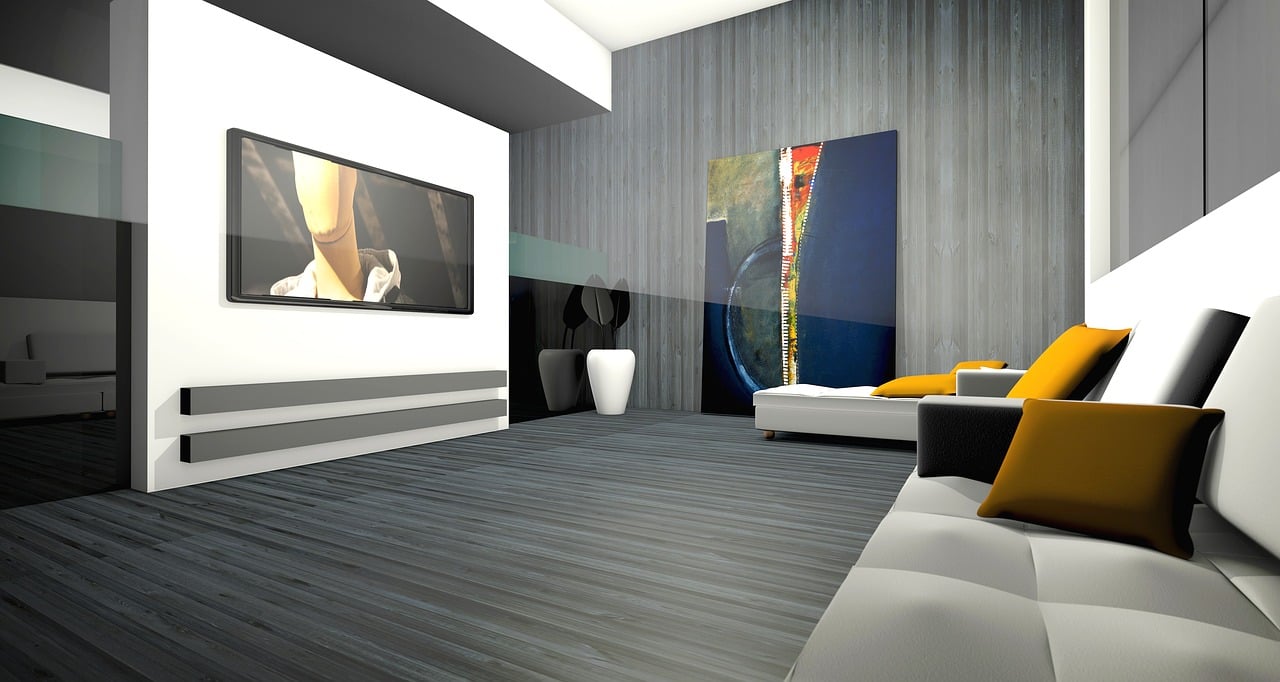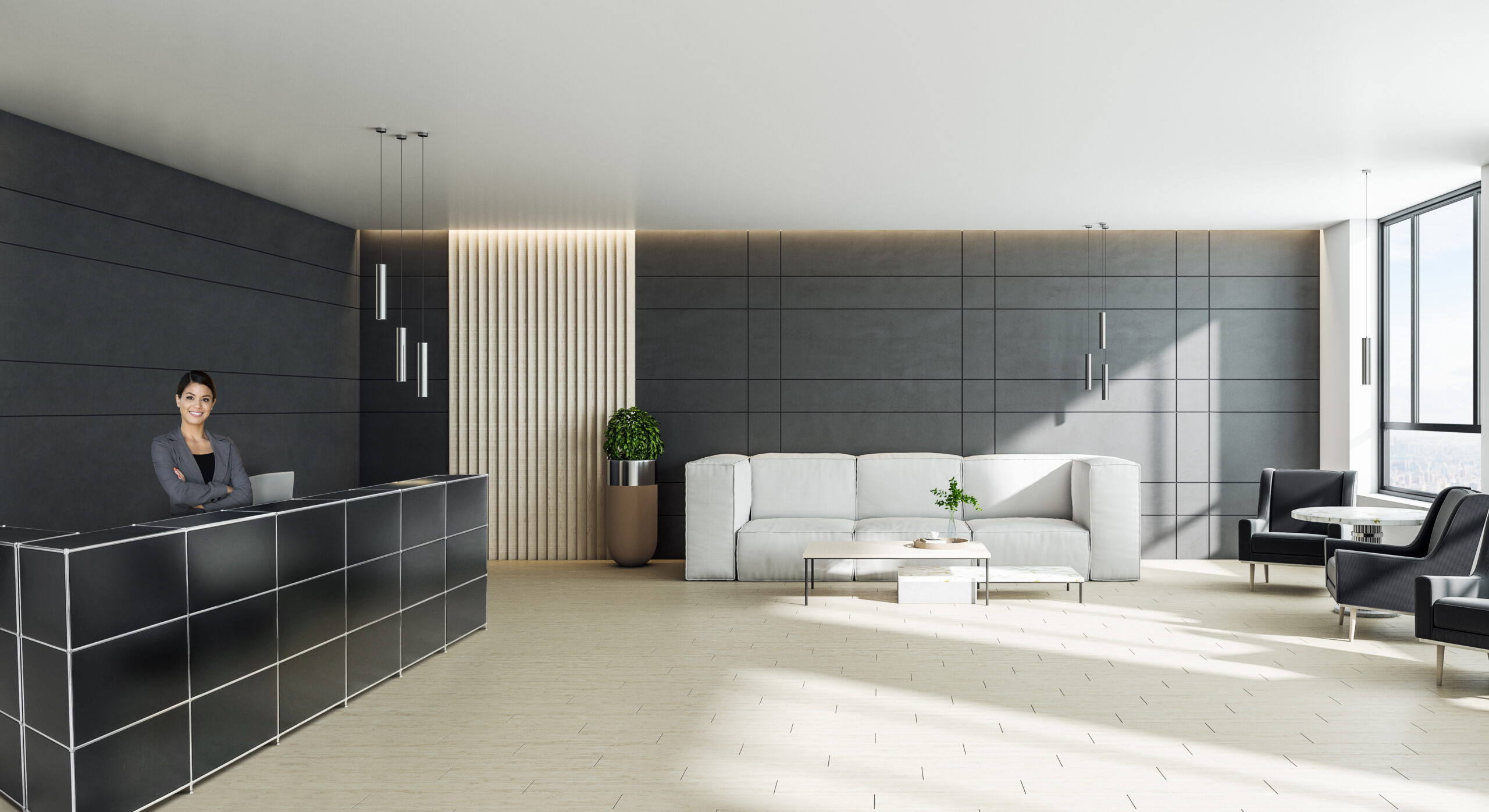When it comes to office and facility planning, there are many variables to consider. How big should your office be? What type of layout is best for your team? How can you make the most of your space? These are all important questions that you might find difficult you to answer on your own. This is where our guide comes to rescue! In this guide, you’ll learn everything you need to know about planning and furnishing your office – from choosing the right location to decorating your space. Plus, we’ll give you some tips on how to stay organized and productive in your new office. Whether you’re just starting out or looking for ways to improve your current setup, this guide is for you!
Inhaltsverzeichnis
ToggleOffice Planning Guide: Why should you pay so much attention to office planning?
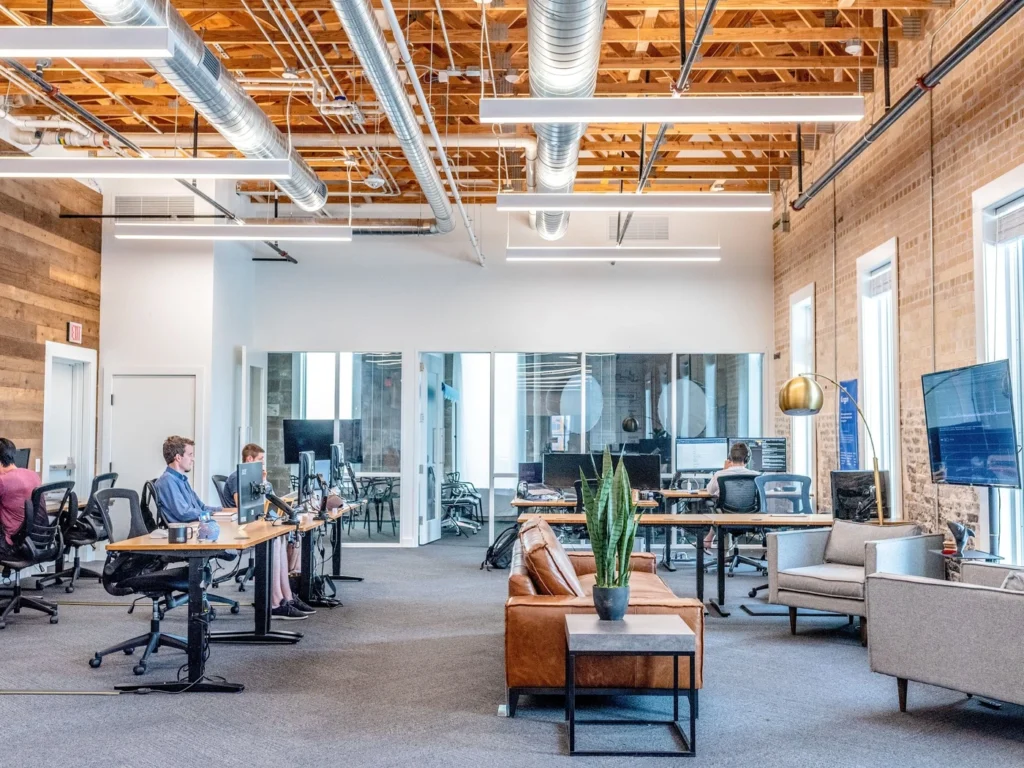
A well-planned office can improve productivity and employee satisfaction, while a poor office can lead to frustration and low morale. Enjoyment in the workplace is important for the corporate culture. Office space can be one of the most expensive overhead costs of a business, so it makes sense to invest time and effort to ensure it is efficient and effective. Finally, once office space has been set up, it can be costly and time-consuming to change it again. If you take the time to carefully plan your office space, you can avoid many potential problems from the start.
Which points are particularly important when planning the interior?

A very important step that should be taken at the very beginning of planning new office space is the needs analysis. The size and nature of the business play a role in determining the specific requirements for the space.
How many employees will work in the office? What kind of work will they be doing? What form of cooperation do they want? What kind of working atmosphere do you strive for?
To ensure that office space meets the needs of the business, it is important to consult with employees, customers and other stakeholders. In this way, it is possible to identify all the specific requirements that need to be taken into account during planning.
Only if you know and can consider all the needs, you can create working environments that are functional as well as stylish and inspiring. In this post, you’ll find 7 avoidable office planning mistakes.
The perfect location
Where should the office be located? Different aspects are important when choosing the optimal location. Your needs analysis will give you important answers for this as well.
Office complexes or business centers offer a wide range of facilities and services that can make setting up a new office much easier. Examples include meeting and conference rooms, business support services, mail and courier services, and even on-site childcare. In addition, many office complexes offer attractive amenities such as gyms, restaurants and cafes. When choosing a location for a new office, it is important to consider the needs of the company and its employees. For example, companies that rely heavily on customer visits should choose an office with good visibility, good access to public transportation and adequate on-site parking. By carefully considering the needs of the business, it is possible to find an office complex that offers the perfect mix of facilities and services.
Basics of interior design
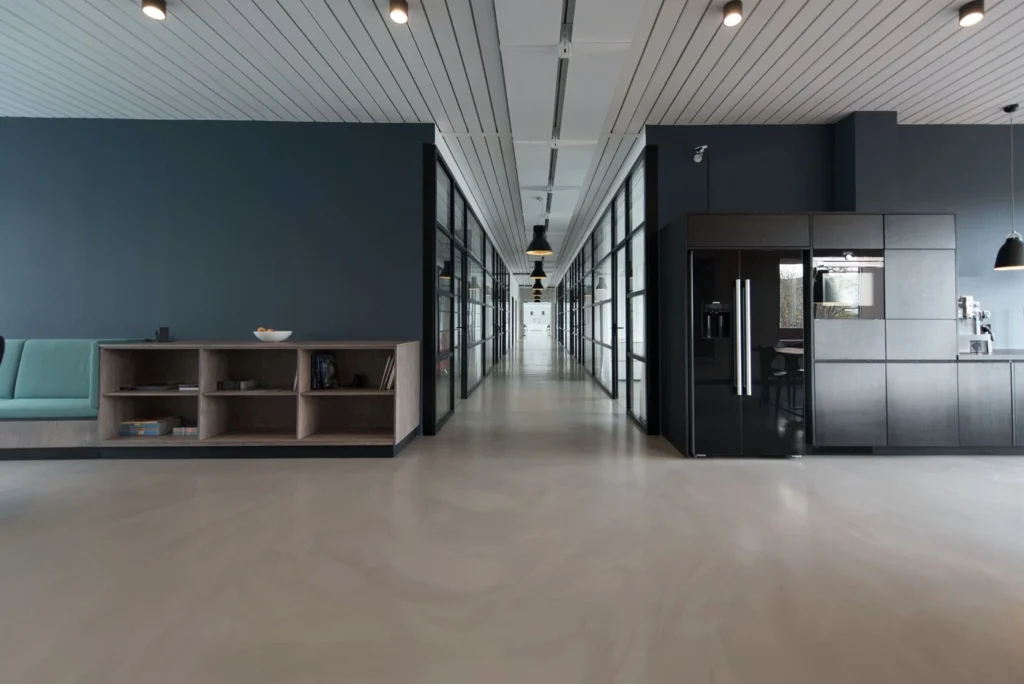
The larger your office to be planned, the more complex the task becomes. Since professional office planning can quickly become expensive, we explain professional planning step by step. Professional office planners work with 3 concepts:
- The office concept
- The workplace concept
- The room concept
Definition: Office concept
The office concept is about HOW work is done, whether at an individual workstation in a group office or in an open-plan office. Whether at a fixed workstation or a desk-sharing workstation.
Definition: Workplace concept
The workplace concept is about the design and equipment of the individual workplaces in terms of function and ergonomics. Different task contents often necessitate different requirements in terms of technical equipment and furnishings.
Definition: Space concept
The spatial concept is about the allocation and arrangement of the different functional areas on the surface. The room concept defines WHERE work is done, where meeting rooms, social rooms, etc. are located. A good room concept takes into account the requirements for undisturbed work, communication possibilities and freedom of movement.
Office concepts and their specifics
In today’s business world, competition for the best talent is fierce. To attract and retain top talent, companies are increasingly focusing on creating modern, comfortable and stylish office spaces.
The office of the future will be designed to foster collaboration and creativity, with plenty of open workspaces, natural light and innovative technologies. The office of the future will not only provide a pleasant and productive working environment, but will also be highly sustainable, with energy-efficient buildings and green spaces. As companies try to stay ahead of the competition, the office of the future will grow in importance.
- The individual office was the classic of the traditional office concept.
Since it is not very suitable for teamwork, today it is mainly found only in public areas, where privacy must be guaranteed, or as an executive office. Today, most work is done in team or group offices , where several colleagues share a workroom. - In the open-plan office, all workstations are arranged in one large area.
The advantage of the open-plan office is the small amount of space required per workstation and the ease with which employees can communicate with each other. However, a high noise level makes concentrated work difficult. Open-plan offices are therefore particularly suitable where employees work intensively together. - The combi office relies on a deliberate mix of proximity and opportunities for retreat.
Meeting rooms, lounge or kitchenettes are places of communication. On the other hand, employees have access to retreats for concentrated work. - The Open Space concept is a modern development of the open-plan office.
The work surface is divided into different functional areas. There are fixed and flexible workstations, but also numerous common areas such as lounges with sofas, coffee kitchen with bar tables, conference and relaxation areas. The open space concept favors creativity, communication and exchange in everyday office life.
Designing workplaces correctly
Now that you have decided which office concept you want to work with in your company,
define the workstation concept in the next step. How should the individual workstations be designed and equipped in terms of function and ergonomics?
Creating a comfortable and ergonomic environment for employees is the most important thing in workplace design. The arrangement of office furniture should provide plenty of freedom of movement, and all items should be within easy reach. In addition, the workplace should be designed to promote good posture and avoid strain on muscles and joints.
Use daylight, because it is very important for fatigue-free work.
You have a long window front? Ideally, the desks stand at a 90-degree angle to it.
Plan desks vis-à-vis. No one likes to have their colleague sitting on their back. In teamwork, it facilitates communication and overall minimizes walking distances.
Planning computer workstations
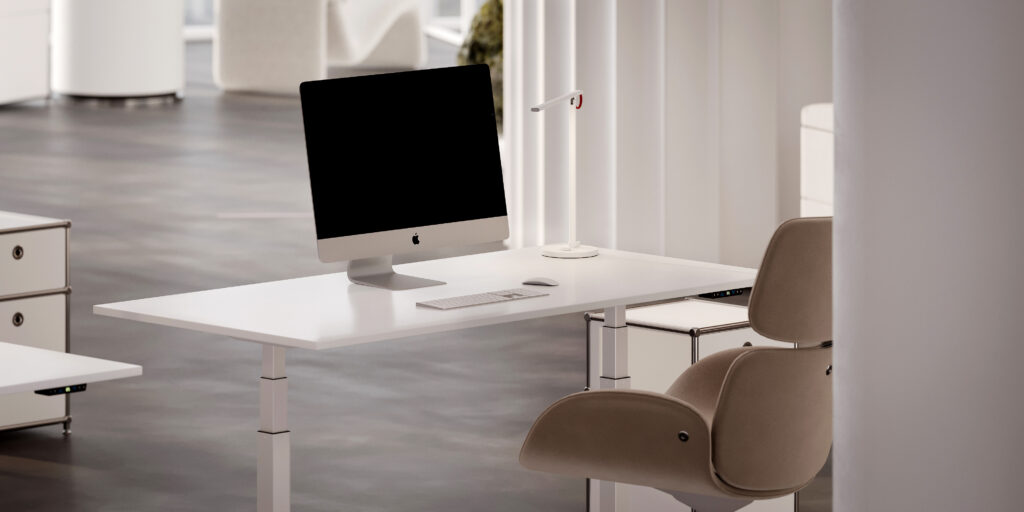
VDU work often leads to tension, neck or headaches, burning eyes. For this reason, ergonomics at the computer workstation is particularly important.
Computer workstations should be designed so that the user can assume a comfortable sitting position and have easy access to the keyboard, mouse and monitor. The ideal computer workstation is one that is ergonomically designed to meet the needs of the user. When planning a computer workstation, consider the following factors:
- The height of the monitor should be at eye level. This prevents neck tension.
- The keyboard and mouse should be positioned so that the user’s arms are at a 90-degree angle. This reduces the strain on the wrists.
- The chair should provide good support for the back and allow the feet to rest flat on the floor.
As the largest accident insurer in Switzerland, SUVA is particularly concerned with prevention.
Suva offers extensive information material and courses on the subject of ergonomics at the VDU workplace.
Link to SUVA Online Presentation:
https://www.suva.ch/de-CH/material/Dokumentationen/praesentation-bildschirmergonomie
or: Learn more about“Ergonomics at the workplace” in our guidebook.
2D office planning
For the first quick designs, the simple 2D version using the floor plan is recommended. A simple floor plan will help you find the best use of space.
A floor plan on a scale of 1:100 is best for this purpose. In a floor plan with a scale of 1:100, a room is shown a hundred times smaller than it is in reality. One centimeter in the floor plan therefore corresponds to 100 centimeters or one meter in reality.
Plan all relevant areas
Reception & waiting area, areas for office work, conference and meeting rooms, break area, coffee kitchen, technical, storage areas, social rooms – sanitary rooms, rest rooms, etc.
Divide the space into zones for concentrated work, zones of collaboration,
zones of communication to create the most pleasant and efficient working environment. Separate the different zones with walls, room dividers or half-height furniture. So you can provide for necessary spatial boundaries.
3D interior planner
Following the rough planning in 2D, the 3D space planning should take place. This is recommended above all in large rooms, because this is the only way to get a realistic picture of how clearly laid out
your office is. Depending on how much energy, time and budget you have, you can do this 3-D planning yourself or have it done.
Online 3D interior planner
There are several free 3D room planners from different vendors for Mac or PC. All of them work very similarly. First you need to create a floor plan. There are usually templates for this from which you can choose. Then adjust this floor plan to the size of their office space, add walls, doors and windows, choose wall and floor color. After that, you can start planning the interior of the respective rooms.
The problem with free software, however, is that you usually can’t plan with the office furniture you actually want, but only have a limited selection to choose from. If one is completely inexperienced with such software, this task can become rather challenging.
Planning software provided by furniture manufacturers
Some furniture manufacturers work with their own planning tools, which can download for free or they offer free planning service. Such a free office planning proposal will save you a lot of time. The more detailed you can be in your brief, the better.
Specialized planning offices
Are you planning a very extensive major project? Specialized planning offices provide you with detailed concepts up to complete documentation for tenders. However, this comprehensive service can quickly become very expensive.
Alternatively, you can have your office planned by our experts free of charge and without obligation.
How do I plan a pleasant atmosphere for employees?
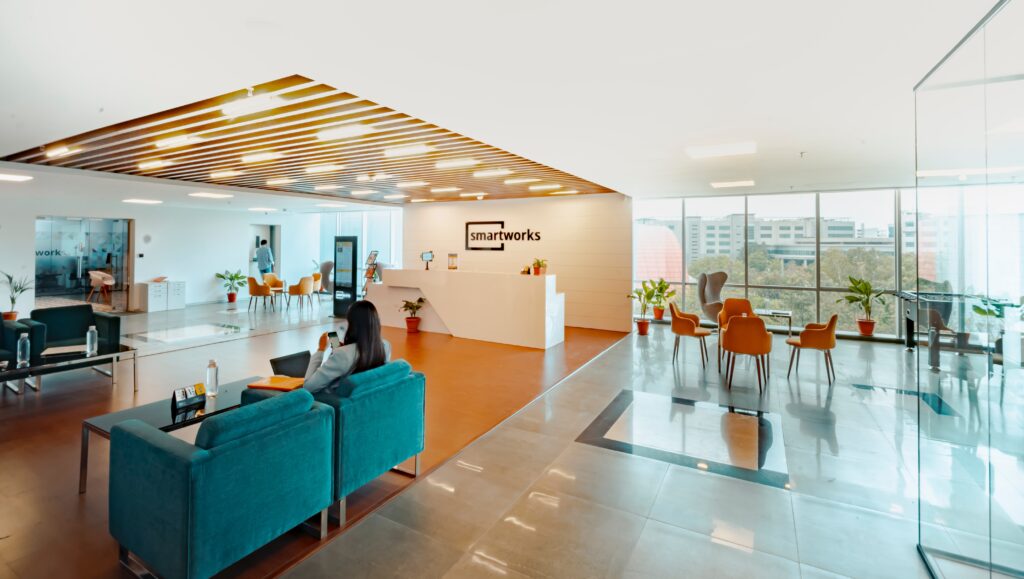
We have already discussed the most important points:
- The spatial design and division into different zones so that work tasks and work processes are effectively supported
- The design and equipment of workplaces so that employees feel comfortable, are motivated and can work ergonomically
- In addition, there are good lighting conditions and the elimination of unnecessary acoustic disturbances
- Meeting rooms for meetings in small or larger groups
- Retreats for concentration, recreation and social contacts
A completely different, but equally important point is the office furniture and decoration
- What furniture should you use for your office decor?
- Do you want to set color accents?
- Do you want decoration and plants to beautify your office?
Choose the right office furniture
The choice of office furniture is perhaps the most important decision!
For this reason, we provide you with a separate blog about the search for suitable office furniture. It addresses the following questions:
- What does the term “ergonomics” mean in the workplace?
- What makes good office chairs stand out?
- How do I find the right desk?
- How do I find the right storage?
Here you can read how to set up your office like a pro.
Office planning checklist

Congratulations – your successful office planning can begin. We have summarized the most important aspects again for you in this checklist.
- Needs analysis involving employees and customers
- Clarity about your office concept
- Listing of all areas that the office should include:
- Selection of a suitable location
- Creation of the workplace concepts
- Creation of a room concept
- Office furniture selection
- Design and decoration of your office space
Conclusion
This brings us to the end of our series on office planning. We hope you found this blog helpful. If you have any questions or would like to learn more about office planning, please contact us. We are happy to help you plan the perfect office for your business. Thank you very much!
Questions and answers about office planning
What is often forgotten in the planning phase?
Unfortunately, the positive effects of employee participation are often underestimated. Listening to all employees, discussing the concepts over and over again as they develop, and considering their different needs can be very burdensome. However, those who do so anyway will be rewarded in the long run. Employee motivation will be many times higher and long-term. In a new office that does not take into account the needs of the employees and did not leave room for discussion during the planning period, the acceptance problems will only become visible after the project has been completed and will jeopardize the success of all your efforts and expenses.
We’ve blogged the 7 most common office decorating mistakes for you.
How do I plan an executive office?
An executive office is the heart of many companies, where important decisions are made and business contacts are maintained. To ensure that you can work efficiently in your executive office, there are a few things you should consider when setting it up. The best tips for decorating your executive office include comfortable and ergonomic furniture, a professional and calming color scheme, and a personal touch that makes you feel at home. You can read more about this in our blog “Furnishing an executive office“.
What are the legal regulations in Switzerland regarding the design of the workplace?
The State Secretariat for Economic Affairs (SECO) is responsible at the federal level for the protection of working conditions. All relevant legal regulations can easily be found on its homepage. Regulations 3+4 govern the regulations on space requirements and ergonomic design.
PDF“Guide to Regulations 3+4“:


